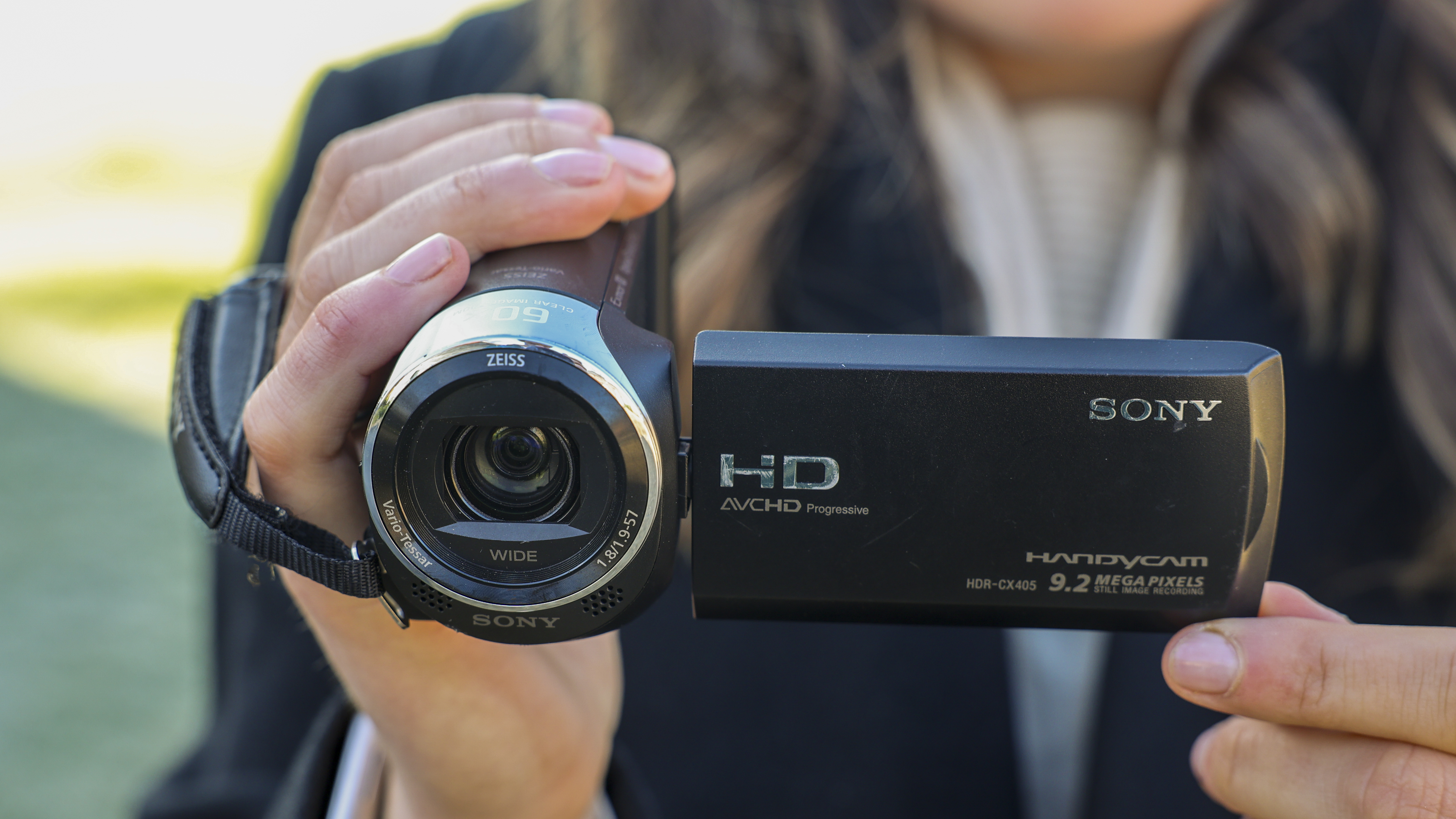
It seems sensible to think that as smartphones have become such advanced all-in-one content creators, the best camcorders would be redundant. And yet, the compact Sony HDR-CX405 continues to sell and review well. With an asking price of under $300/£300, the CX405 doesn't go toe-to-toe with the best 4K camera for filmmaking or dedicated cinema cameras like the Sony FX30. Instead, you get modest Full HD (1920x1080 resolution) video at 60p and 9.2MP stills, plus some limited options to change settings between automatic or manual exposure.
Its appeal lies in its simplicity and portability. You don't have to be a seasoned videographer to use the CX405. Sony has designed it for people who want to make home movies or capture their family on holiday. At its release, smartphone cameras were still in their infancy and nowhere near the quality of the latest flagships, making the CX405 a more straightforward choice.
But in 2024? Well, if you don't have the best phone for video recording or don't know how to get the most out of it, you might feel more comfortable with a compact camcorder. After all, amateur users who'll be recording occasionally rather than for commercial projects don't need the best cinema cameras and probably don't have the budget for them either. That's where the Sony HDR-CX405 comes in.
It's the manufacturer's cheapest and smallest camcorder, at half the price of the 4K-capable Sony FDR-AX43 and more than half the weight. It's similar in size and price to the Panasonic V180, with the same-sized 1/5.8"-Type MOS sensor – a camcorder that also remains on sale long past its expected expiry date. At over nine years old, the Sony HDR-CX405 is showing its age, and it surprises me that it hasn't been discontinued. But then, Sony probably isn't going to put any effort into any new releases when its hybrid mirrorless cameras are so successful, or when the best Sony phones offer a wealth of video recording options.
Max resolution: 1920x1080
Sensor: 1/5.8 type (3.1mm) back-illuminated Exmor R CMOS
Total pixels: 2.29
Zoom: 30x optical, 360x digital
Memory type: Micro SD/SDHC/SDXC
Dimensions: 54 × 59 × 128mm
Weight: 215g (with battery)
On paper, I didn't think the Sony HDR-CX405 could do enough to wow smartphone shooters into buying it. The wireless connectivity options are poor, the sensor is tiny, and the menus offer more in the way of nostalgia than they do video settings. But there is still a desire for compact camcorders, otherwise they wouldn't be available at major photo retailers, or popping up on TikTok videos.
I'm the right age to have seen my parents use camcorders at family events, but now I use an iPhone 15 Pro for social videos or a Canon EOS R6 for anything more serious. With that in mind, I tested out the Sony HDR-CX405 for several weeks to find out where it sits among those options, and whether it's the right choice for you if you want a cheap, compact camcorder in 2024.
Sony HDR-CX405: What's changed?
The Sony HDR-CX405 was released at CES, Las Vegas in January 2015, alongside a smattering of new camcorders, including the headline Sony AX33 4K Handycam. It had a few major upgrades on the Sony CX240; optical image stabilization over digital stabilization (which is better at preserving image quality and resolution) and a new 1080p 30fps recording mode. It also got a bump to 30x optical zoom, up from 27x, which I've found to be a great range for general video work.
Rival consumer camcorders at the time included the Canon VIXIA HF R40, with the advantage of an 8GB internal flash drive and SD memory card slot. Interestingly, Sony hasn't brought out any upgraded camcorders in the sub $300/£300 price bracket since, and the CX405 is still on the shelves of major photo retailers nine years later - and is now one of only a handful of camcorders you can buy at this price point.

Sony HDR-CX405: Design & Handling
The Sony HDR-CX405 is, to put it bluntly, ridiculously tiny. At just 215g, it weighs less than my iPhone 15 Pro, and while being deeper and rounder, it's also shorter in length. Being a basic camcorder, buttons and controls on the outside of the small barrel design are minimal. On top, there's a rectangular zoom rocker, in front of a Photo button, which you press down to take a still image.
You don’t get a lens cap or cover with the Sony HDR-CX405. To the left of the lens, as you look at it, there’s a mechanical slider to open or close the lens cover. It’s low-tech and yet satisfying to use. The main downside is that if you forget to cover the lens after use – as I did several times – there’s a risk of causing damage. If you don't remember to open it, the camcorder will detect a dark picture and remind you.
On the body, the only physical control left is a raised silver one to start and stop recording. There’s a tripod mount on the base, a slot for the battery, and a mini HDMI port behind a cover on the right of the body. There's no power button on the HDR-CX405. To turn it on you open out the screen. This also reveals the slots for a micro HDMI port and microSD card to store your recorder content. Left of the display, there’s a play button, and a four-way directional toggle with a central button to make selections, as the display isn’t touch-responsive.
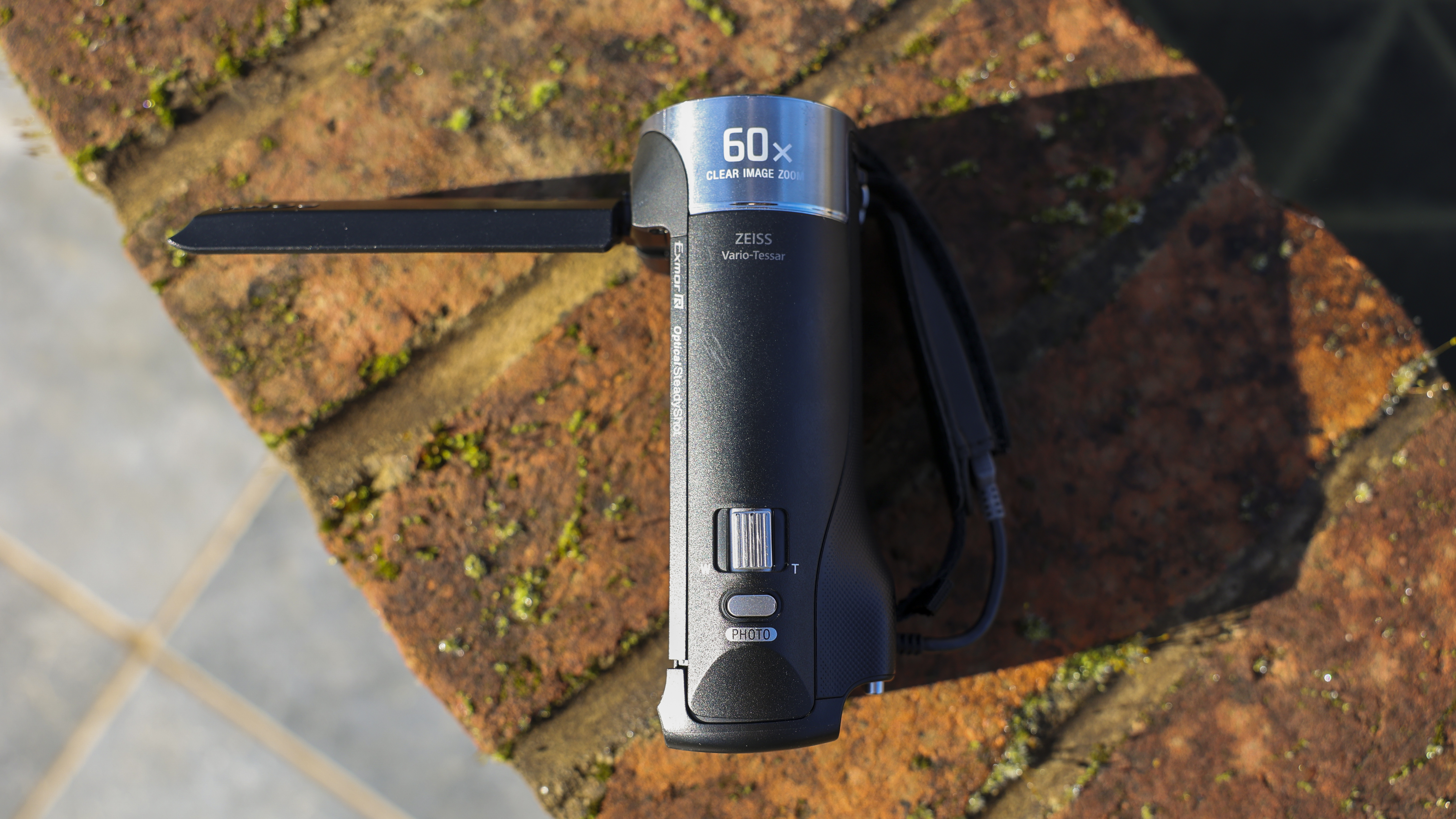
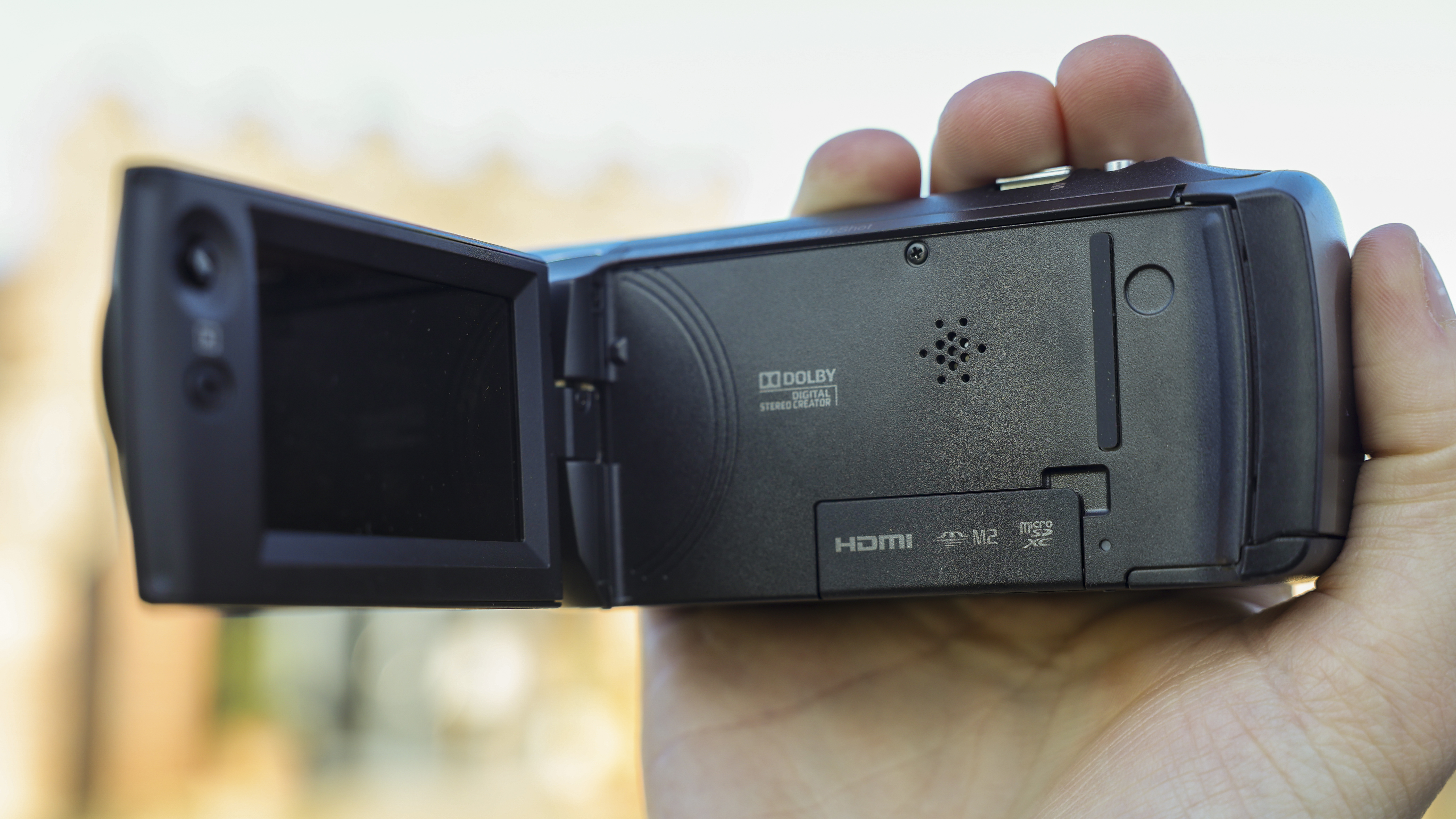
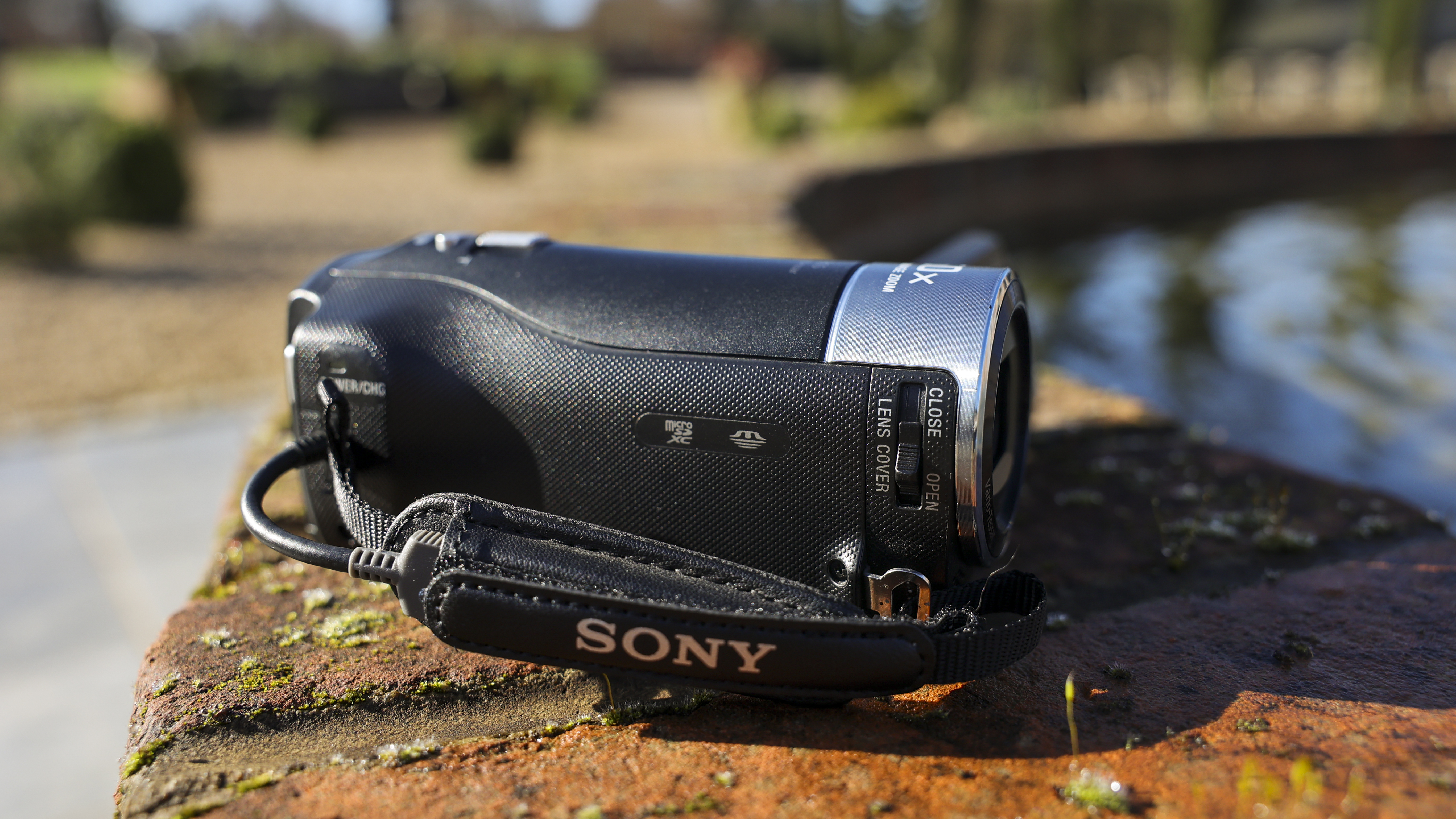
The camcorder is charged via a standard USB rather than a USB-C cable, but a unique feature of the HDR-CX405 is that the power cable is built into the body. When not in use, it tucks away into a slot in the handle. If this were a pro-grade camcorder, I’d be worried about the durability of having a cable hanging loose constantly, but for the average user, I think this design is inspired. There's no need to carry a cable separately or hunt for it when you inevitably misplace it.
Overall, handling is simple rather than sophisticated. The camcorder felt satisfyingly snug in my smaller hands, but my partner’s bigger mitts dwarfed the body and he found it harder to reach the zoom toggle to make subtle movements. With above-average-sized hands, you’ll need nimble fingers to operate the camcorder effectively, and it's worth pointing out that it's designed for right-handed operators.
Although the buttons and zoom rocker feel very plasticky – in line with the price – they’re surprisingly responsive. When zooming in or out, I found it easy to create a smooth transition and stop suddenly if and when I needed to respond to the action in the frame. As the zoom level appears on the LCD screen, it's easy to see how far you have to go.
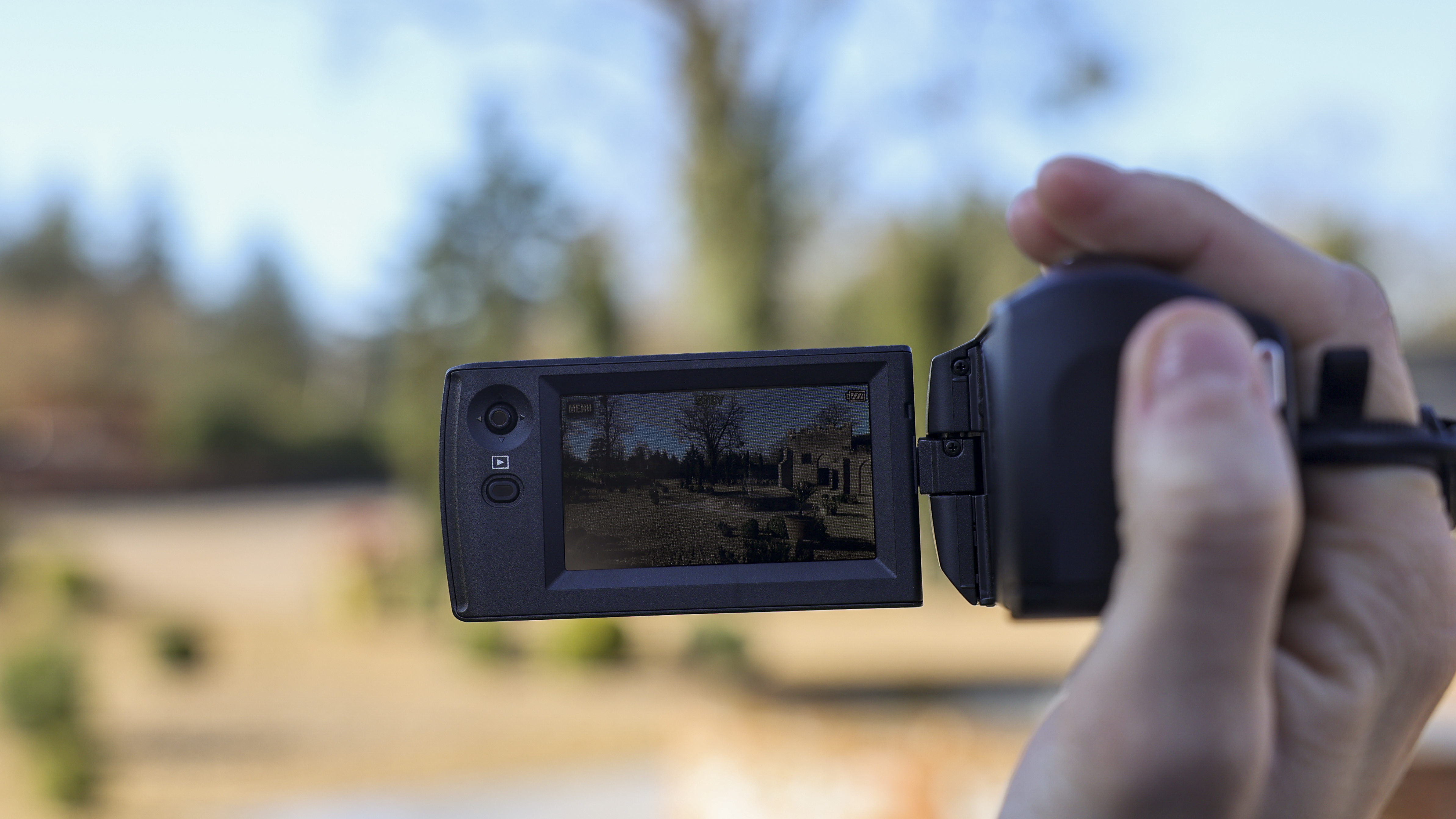
Speaking of the LCD screen, the 2.7-inch real estate is adequate for the camcorder's overall size, but I found it hard to see in bright sunshine, and the 230K-dot resolution felt ancient compared to the 1.6 million-dot resolution of my mirrorless Canon. Granted, it's not a fair product comparison when you consider the age and level difference. But it does affect how usable the screen is in certain situations.
Sony HDR-CX405: Performance
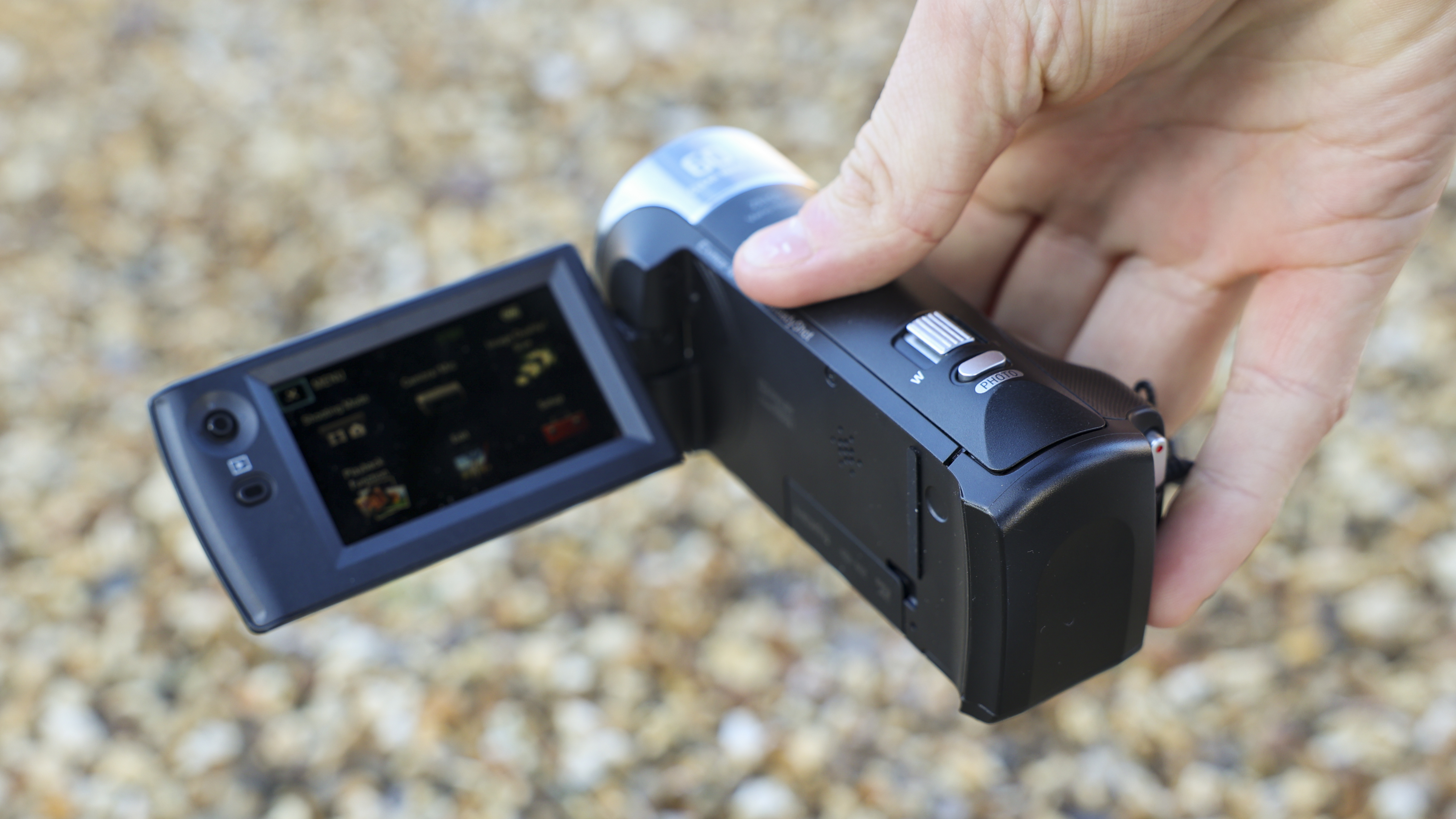

The core elements of the Sony HDR-CX405 are its Exmor R CMOS sensor and the BIONZ X image processing engine. Sony states that this “large” sensor enhances image clarity, lowers noise in low light and gives you soft background defocusing. However, I didn't experience these advantages myself. Overall, the 1/5.8 type sensor fails to match the video quality in low-light situations compared to the 1-inch prosumer Canon XA-75 and lacks significant bokeh behind subjects.
Nevertheless, it's worth noting that the Canon camcorder comes at a significantly higher price point. The CX405 provides satisfactory picture quality in most daylight scenarios, particularly when utilizing the maximum XAVC S or AVCHD video format. Speaking of formats, you can record two videos simultaneously; one in the smaller MP4 format for quick sharing and another in the maximum-quality XAVC S or AVCHD format for editing. I also loved that you can capture HD video and high-resolution stills at the same time, although at 9.2-megapixels, they’re nothing like the image quality you get on the latest smartphones.
The camcorder comes with some family-friendly tricks to help you make polished films, including picture effects (like toy camera and pop), and the ability to edit in-camera using the onboard Highlight Movie Maker. It’s not advanced, but it does mean you save time in a separate program.
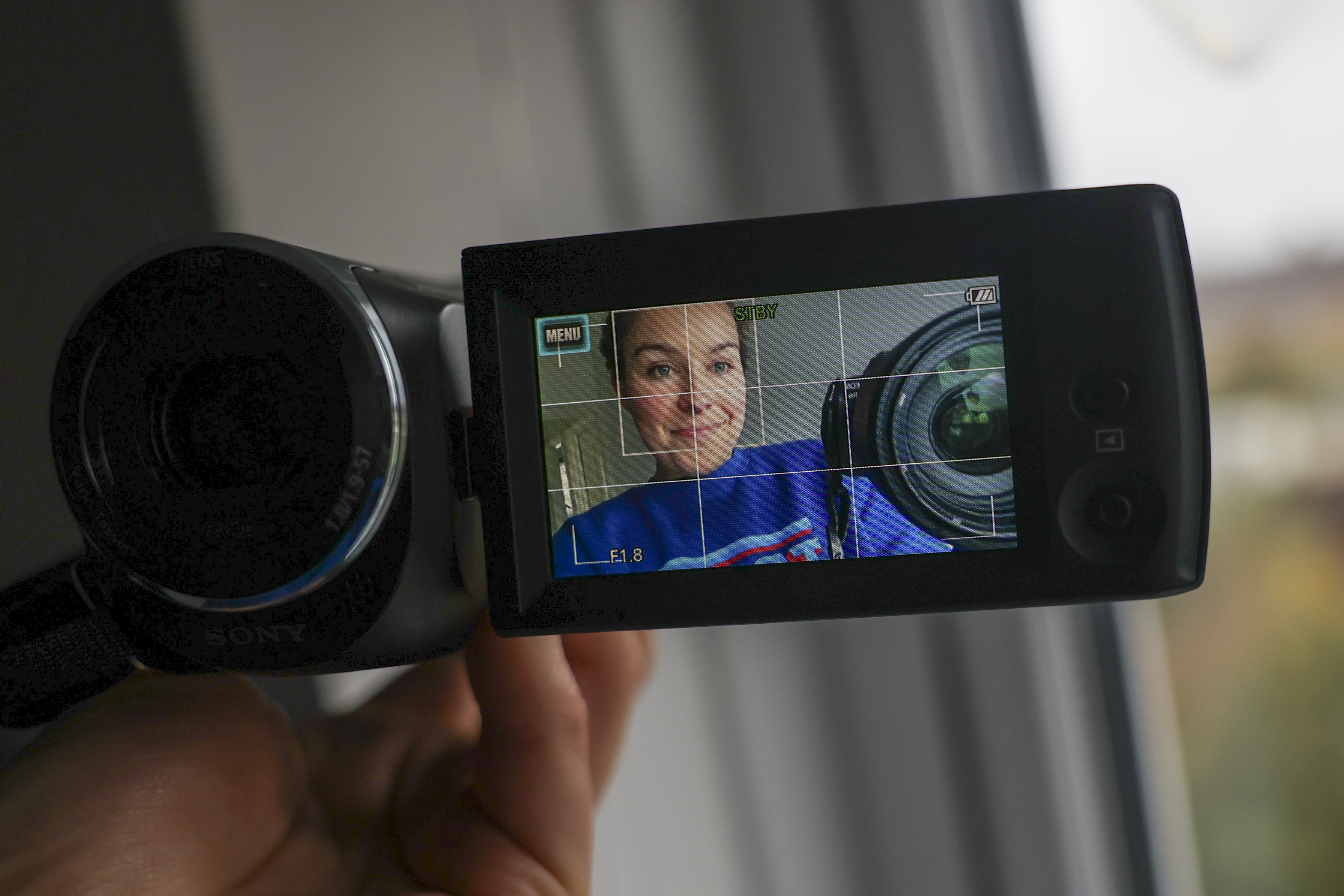
Most users of the HDR-CX405 are likely to be beginners who will stick the camcorder in Intelligent Auto mode, leaving the camcorder to work out what’s being shot and therefore what settings to choose. It can choose results for 90 scene types, and I was pleased to find that it adapted just as easily to a sunny backlit scene, a rainy urban scene, and landscapes. Manual mode allows you to change the iris (aperture), and shutter speed, and I found this level of control helpful to adapt to high-contrast scenes.
When filming handheld at night, the footage did become muddy and noticeably noisy, and without the option to add a hood, the lens was quickly blurred by falling rain. There’s a low lux menu feature designed to give you clear filming in a dark environment, but I struggled to tell the difference when this was enabled. The HDR-CX405’s image quality is well-balanced in well-lit conditions, but without adequate noise handling or an infrared mode, I’d avoid it for night-time filming.
The 30x optical zoom is one of this camcorder’s big selling points, as it makes it an effective all-in-one, whether you’re capturing your children’s sports team, a party, or a holiday at the beach. The zoom motion is incredibly smooth, and I was impressed by the stabilization of the SteadyShot feature, which I kept on active mode (the maximum level) most of the time. It’s excellent for walking shots, and my footage was mostly steady when carrying the camera across uneven ground. At full zoom, the footage becomes much more shaky, so much so that I didn’t go near the digital zoom of 350x, and deactivated it from the menu so that I couldn’t accidentally go that far.
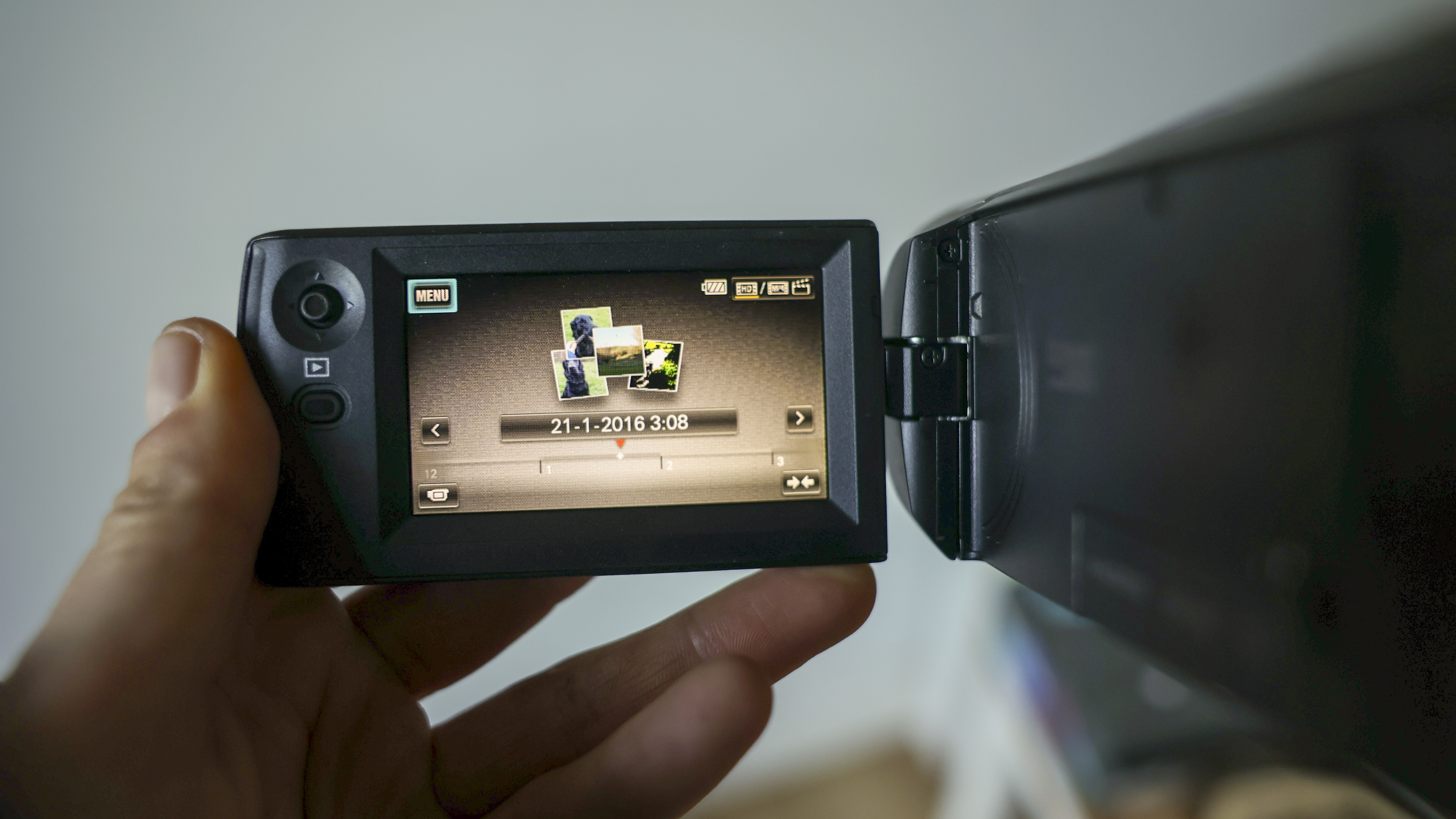
Playback mode on the CX-405 feels more complicated than it needs to be. Sony has opted for a timeline approach called Event Browse, whereby your videos are grouped by date, and you toggle left or right to see a montage of your content at a glance. For me, all the way in 2024, the LCD doesn’t have enough resolution for you to see these icons clearly, and it’s not always easy to remember what you shot on what date. I prefer to see everything in one place on a grid, and it is possible to choose different display options for easy organization and viewing.
Like the beginner Panasonic VC-180 camcorder, there’s no port to add the best microphone for vlogging and filmmaking to the Sony HDR-CX405. But there is 5.1 audio capture, and a built-in zoom microphone, plus the ability to change the mic levels manually from the menu. The camcorder’s speakers are tinny at best, and it was hard to gauge the audio quality in playback mode. But when I listened to clips back on my desktop, I was thoroughly impressed, especially in those where I was talking outdoors. Activating wind noise reduction in the menu didn’t seem to make a discernable difference to the ambient noise, but my vocals were still clear and crisp regardless. And if you’re mainly going to record indoors, the HDR-CX405 mic should offer you superb clarity.
Battery life is also impressive, which is good news for those wanting to shoot on a day out. I'd estimate that I got around 2 hours and 15 minutes from a full charge, which is just shy of the 2 hours and 35 minutes Sony claims the USB-rechargeable NP-BX1 battery can cover.
Sony HDR-CX405: Sample video
Above: sample videos shown with the Sony HDR-CX405
Over a few weeks, I took the Sony HDR-CX405 to a friend's wedding, in low light while visiting the city of Bath, UK, and on long walks in the countryside. I tested all of the different video modes, and these clips were shot at the maximum 1920 x 1080 px resolution as MP4 files, and in 25p, although I also used the 50p frame rate to draw a comparison in performance. I've left the footage unedited.
Sony HDR-CX405: Final Verdict
At first glance, the Sony HDR-CX405 is a sweet and simple camcorder. But the more I used it, the more I discovered how well its manual exposure, white balance and aperture can be tweaked to suit your needs – if you already understand the basics of photography, that is. If you don't, you can rely on the camcorder's automatic scene mode and focus to get sharp footage.
The Smile Shutter feature is effective for capturing candid snapshots and Face Detection is advanced enough to remember people when they re-enter the frame. But don't expect advanced tracking for action, or eye-detection, at this price.
The HDR-CX405 is Sony's cheapest camcorder, and its video quality reflects that, especially without an abundance of light. Given its age, you can forgive the lack of Wi-Fi for easy content sharing. But it's still a faff to get content off the microSD unless you use the built-in USB cable to transfer videos to your PC.
At this price point, the camcorder's progressive Full HD video at 60p/50p is more than adequate. After all, it's the Carl Zeiss 30x optical zoom and impressive 26.8mm wide-angle setting that will attract many users to this camcorder over a smartphone. The HDR-CX405 delivers where it needs to for quality. It's very versatile, and its autofocus, pocket-rocket sizing and usability put it where it needs to be for family filmmakers on a tight budget, or for bloggers who want a bit of camcorder nostalgia.
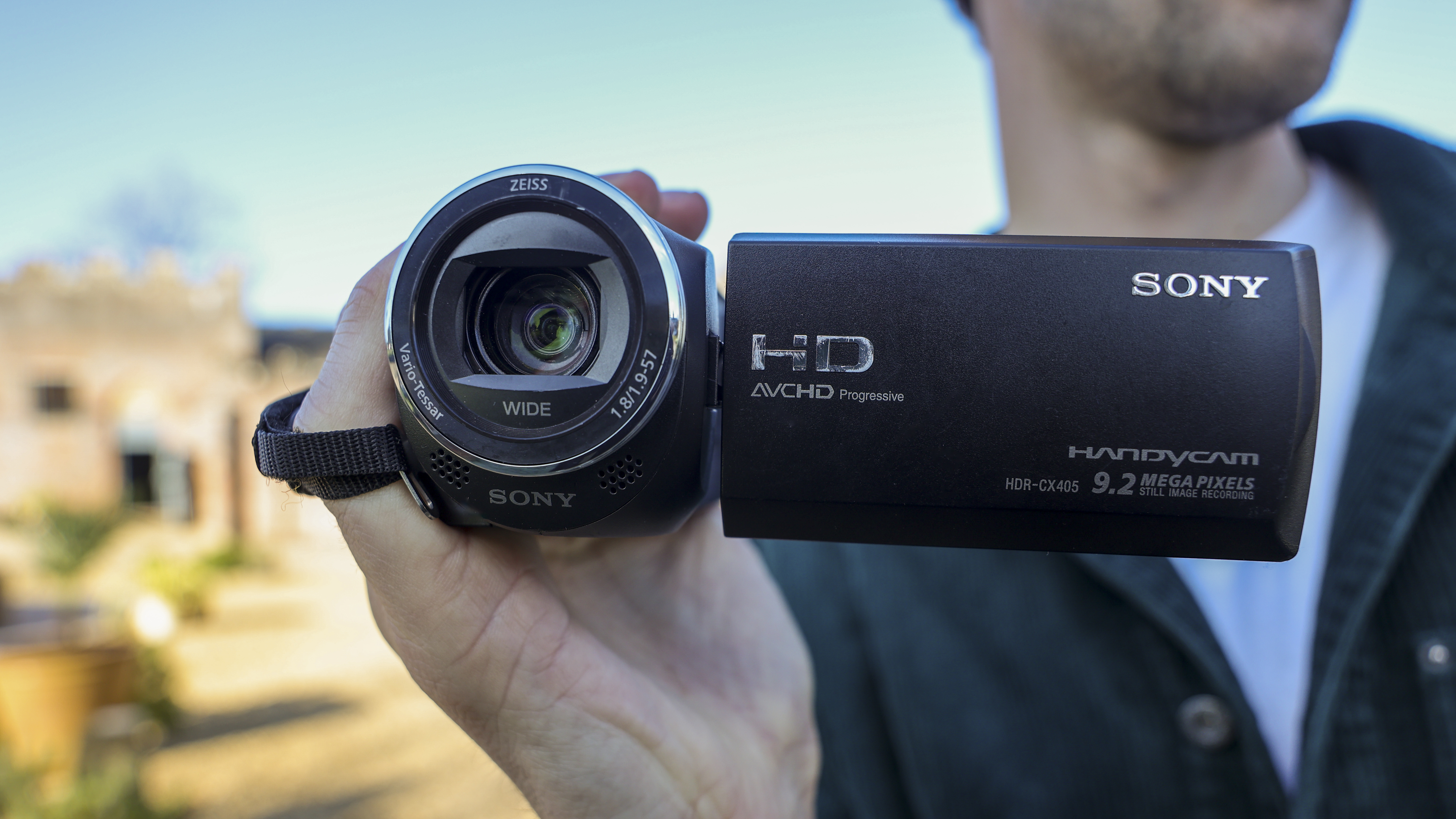
Should you buy the Sony HDR-CX405?
✅ Buy this if...
- You want a tiny camcorder
- Your budget is sub $200/£200
- You shoot in good light
🚫 Don't buy this if...
- A durable build is important
- You want 4K resolution
- You want a touchscreen







